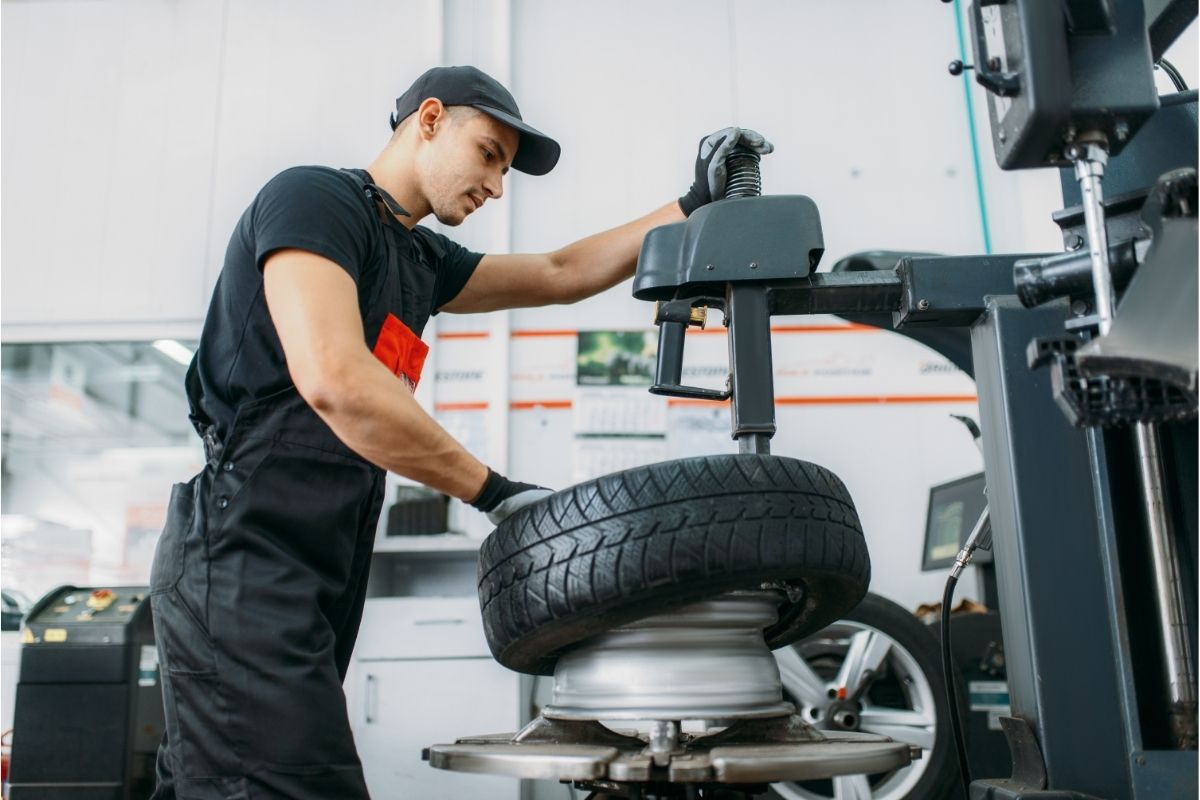Wear and tear affects all parts of your car a little differently. There is no denying that the most noticeable place you can see wear and tear is your car’s tires. This is literally where the rubber meets the road, and every additional mile becomes more noticeable. The right tire can help improve your gas mileage, keep you safe in weather conditions, and help create an aesthetic for your car. The wrong tire can worsen all of that and leave you stranded on the side of the road. Most people don’t think twice about their tires as long as they’re working. When you need to think about New Tires, the choices could be endless and the salesman may want to close a sale more than they want to help you.
The problem comes when they don’t work and it’s time to replace them. Check out the walls of your local tire store and you’ll see hundreds of options, but is there really a difference? Is one piece of rubber that much better than the other? The price tag says it should, and the salesman assures you that you should pay extra and replace all the tires at once. The worst part is, do you even need new tires or is your shop just trying to upcharge for your oil change? We’ve got you covered so you can walk into your shop with confidence and a better understanding.
Do I even Need new Tires?
Your tire tread will give you the answer. The tread is the lines and rigids along your tire that make direct contact with the road. If the tread wears down, the tire becomes slippery and dangerous to drive. The rule of thumb is the penny test. Take a penny and hold it so Lincoln’s head is facing the tire and wedge it between the tread lines. If the president’s head disappears between the ribs, then you should be good to go. If you can easily see old Lincoln’s head, that means your tread is less than 2/32″ and you’re driving on bald tires. Bald tires mean it’s time to replace them.
Most tires will last around 50,000 miles, but some brands offer tires that can reach 80,000 miles. That is, however, under ideal road conditions. If you park your car for extended periods of time, you may have patches on your tire that wear down faster than others. If you spend a lot of time on dirt roads or rough terrain, your tires could wear down even faster. Most tires last around 6 years, and even if the tread is still present after 10 years, it’s time to replace them. That’s because the rubber starts to break down. You may see cracking in your tires, and that’s a recipe for a blown tire at any minute.
But it’s your car, and you know how it drives. If you notice your car veering to the side, or that it drives differently, you could probably blame your tires. So if your car feels fine, your tread looks good, and you know you got your tires less than 6 years ago, don’t listen to the tire shop trying to sell you four new tires. If you do need tires, it is actually a decent idea to replace all the tires at once. This is because tires wear down inconsistently, and unbalanced tires could cause issues with your alignment.
Okay, you need New Tires for Your Car. What Size do I Need?
The right size tire depends on the car you drive. Some bigger trucks and SUVs can accommodate bigger tires, while a compact sedan needs smaller tires. This is because you don’t want a tire to rub on the wheel well or be too small to get good mileage. They need to fit on your car. A quick search for the make and model of your car will tell the mechanic the size, but that’s not always the best route. The user manual has your tire size listed, but that’s hidden in hundreds of pages of technical writing hidden in your glove compartment.
If you look right there on your tire, you’ll see the size. It’s on the side, and it’s normally two numbers separated by a slash. It will look something like “185/60R13”. Snap a picture on your phone or write it down and show it to your shop. They’ll know right away what tire you need.
There are so Many Types
Touring tires, performance tires, all-season tires, or highway tires are just a sample of the dozens of different types of tires to choose from. They all offer different treads to accommodate different road conditions. If you drive a performance car and have the means, you may want to strap on some highway tires when you’re commuting to work, some performance tires when you hit the track, and maybe even have some all-terrain tires when you hit the slopes. The thing is, most people don’t want to change their tires unless they have to. All-season tires offer the most dynamic treads and offer specs that will keep the tread on your tires the longest. For most of us who don’t have the money or time to change the tires every time we leave the house, all-season tires are the go-to tire.
Assure the Life of your New Tires For Your Car
If you really want to get the most out of your tires, there are some maintenance things you can do. After all, tires cost almost two hundred bucks a pop. Multiply that by 4 and include the service of installation, and you could be spending almost over a thousand dollars on tires. You want to keep your investment from costing you even more money. Get your tires rotated every 5,000 miles to keep the tread from wearing down unevenly. You can have them rotate your tires when you get your oil changed. Make sure your wheels are balanced and your alignment is straight. This can also cause uneven wear on your tires.
Lastly, if you need to move your car a long distance, keep it off the road. If you have to move across the country, it may be best to hire an auto transport company. A car transport company can move your car thousands of miles, and your car won’t even see an inch of wear or tear. Austin Car Transport is a fantastic option if you need to find an auto shipper. For over 16 years, they have been Austin’s go-to, reliable auto shipper. With instant quotes and live customer support, you can’t go wrong with Austin Car Transport to keep your tires from wearing down and adding extra expenses on your next move.




